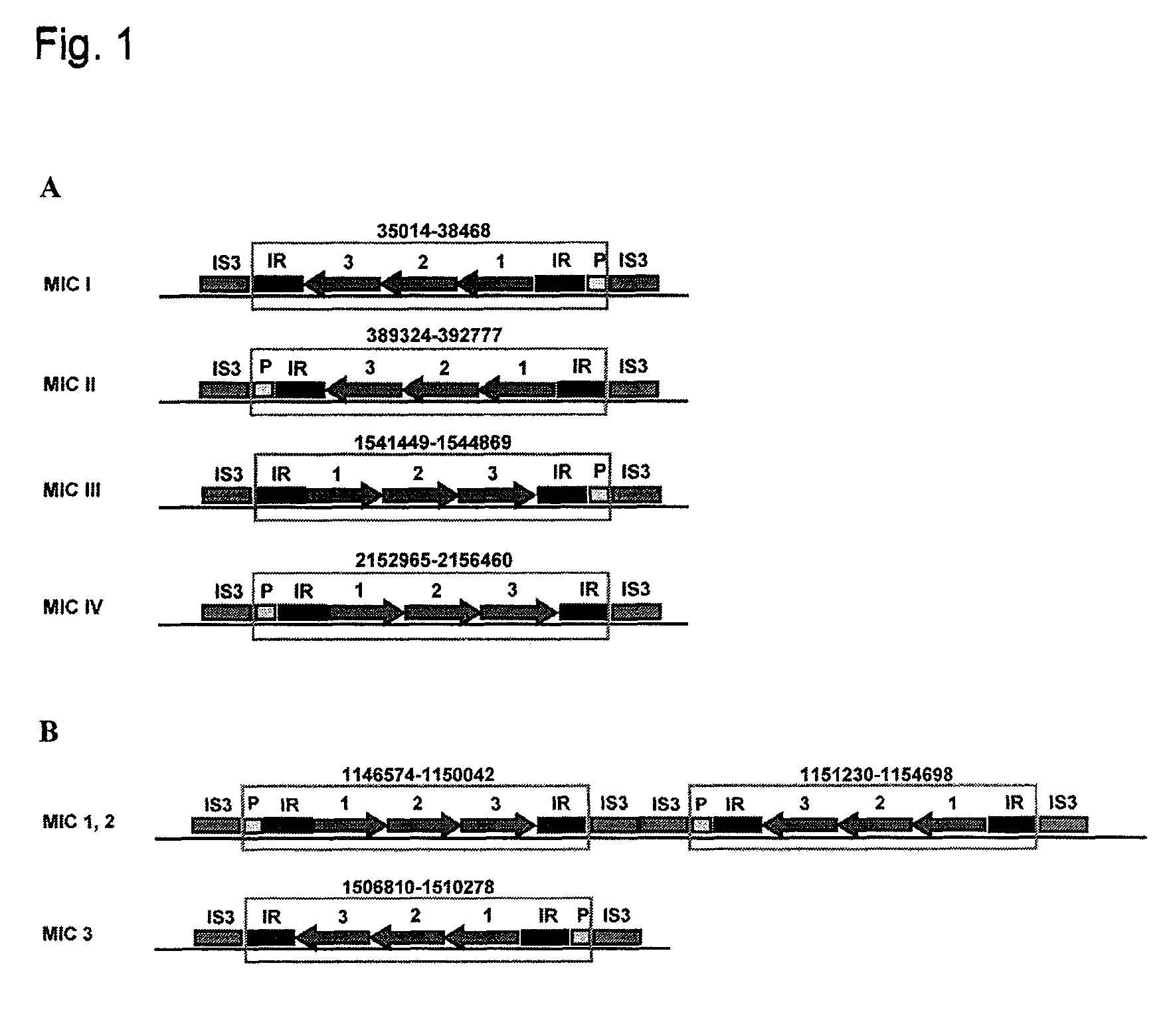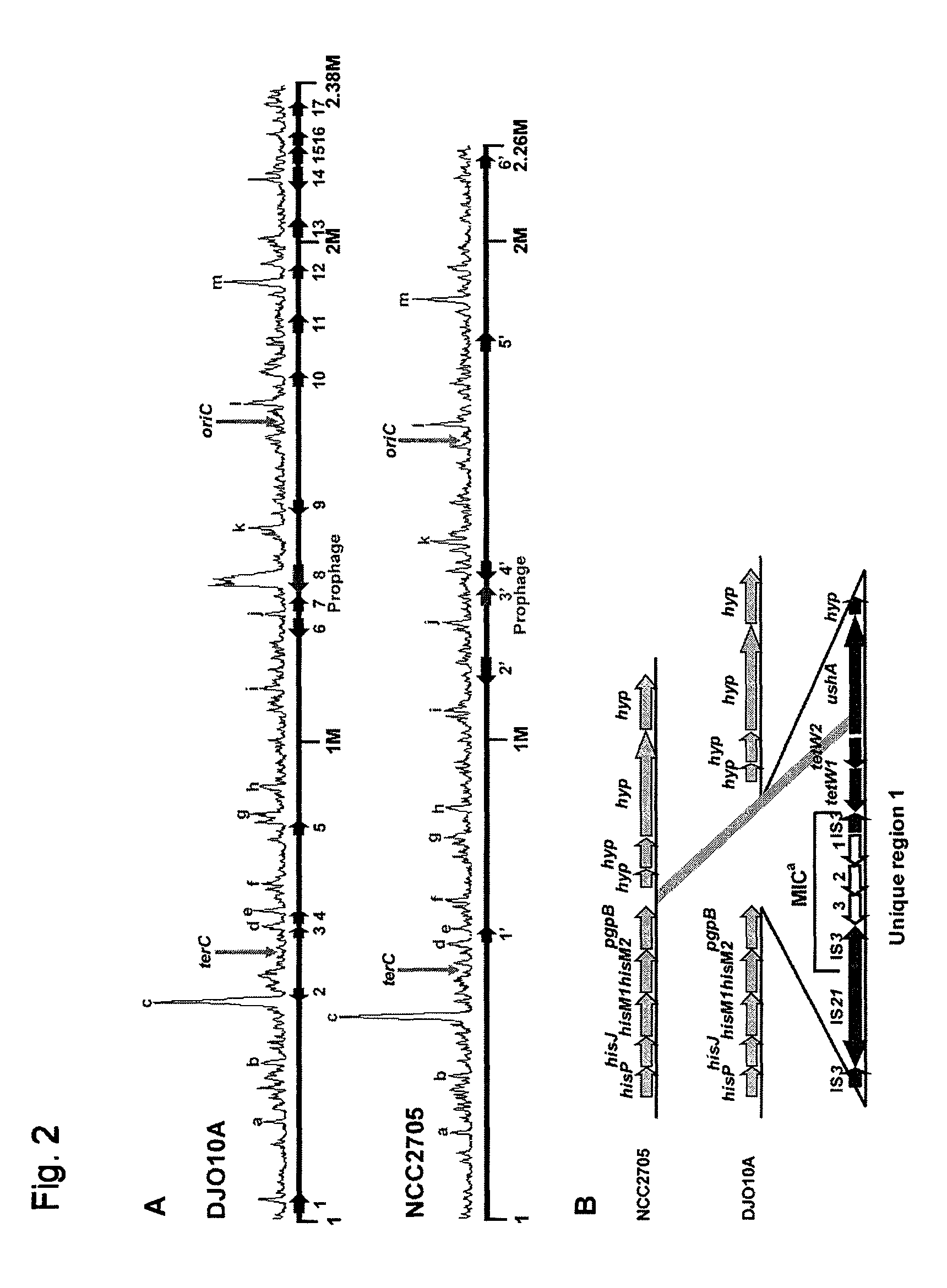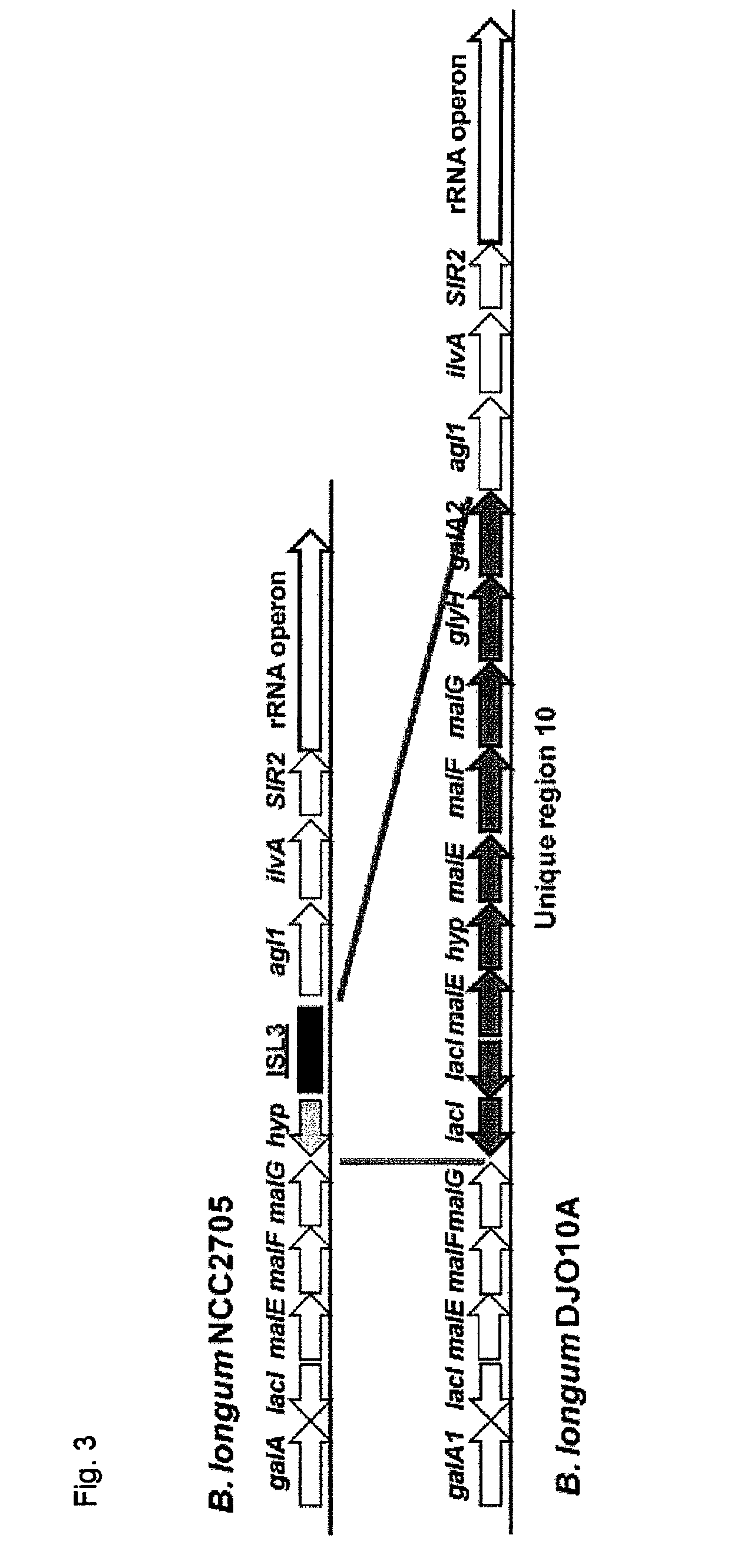Lantibiotics and uses thereof
a technology of lantibiotics and lantibiotics, applied in the field of lantibiotics, can solve the problems of unsuccessful initial attempts to detect lantibiotics produced by the strain
- Summary
- Abstract
- Description
- Claims
- Application Information
AI Technical Summary
Benefits of technology
Problems solved by technology
Method used
Image
Examples
example 1
[0128]Bifidobacteria are frequently proposed to be associated with good intestinal health primarily because of their overriding dominance in the feces of breast fed infants. However, clinical feeding studies with exogenous bifidobacteria show they don't remain in the intestine, suggesting they may lose competitive fitness when grown outside the gut.
[0129]To further the understanding of genetic attenuation that may be occurring in bifidobacteria cultures, we obtained the complete genome sequence of an intestinal isolate, Bifidobacterium longum DJO10A that was minimally cultured in the laboratory (less than 20 generations), and compared it to that of a culture collection strain, B. longum NCC2705. This comparison revealed colinear genomes that exhibited high sequence identity, except for the presence of 17 unique DNA regions in strain DJO10A and six in strain NCC2705. While the majority of these unique regions encoded proteins of diverse function, eight from the DJO10A genome and one ...
example 2
Preparation of Extracted Bifidobacterium Lantibiotic
[0164]B. longum strain DJO10A was grown in MRS broth supplemented with 0.05% L-cysteine.HCl (Sigma) or Bifidobacteria Low-Iron Medium (BLIM). The broth was then used to cover the surface of an MRS agar plate supplemented with 100 mM PIPES or a BLIM agar plate supplemented with 100 mM PIPES. The plates were incubated under anaerobic conditions using either the BBL Anaerobic system (BBL) or the Bactron II Anaerobic / Environmental Chamber (Sheldon Manufacturing) at 37° C. for 2 days. Twenty plates were used.
[0165]The cells and agar medium were crushed and the mixture was extracted with 95% methanol using routine methods. The extraction was allowed to proceed overnight. The final volume was placed in a SpeedVac to remove the methanol and concentrate the lantibiotic.
[0166]The remaining agar was removed by size fractionation using Millipore CentriPrep filtration for partial purification. The extract was fractionated with a Centriprep-30 (...
example 3
Heat Resistance of Extracted Bifidobacterium Lantibiotic
[0169]The lantibiotic from example 2 was placed in a boiling water bath for 10 minutes and then tested for activity using the diffusion method and M. leuteus as the indicator strain. The lantibiotic was active after boiling for 10 minutes.
PUM
| Property | Measurement | Unit |
|---|---|---|
| pH | aaaaa | aaaaa |
| concentration | aaaaa | aaaaa |
| pH | aaaaa | aaaaa |
Abstract
Description
Claims
Application Information
 Login to View More
Login to View More - R&D Engineer
- R&D Manager
- IP Professional
- Industry Leading Data Capabilities
- Powerful AI technology
- Patent DNA Extraction
Browse by: Latest US Patents, China's latest patents, Technical Efficacy Thesaurus, Application Domain, Technology Topic, Popular Technical Reports.
© 2024 PatSnap. All rights reserved.Legal|Privacy policy|Modern Slavery Act Transparency Statement|Sitemap|About US| Contact US: help@patsnap.com










